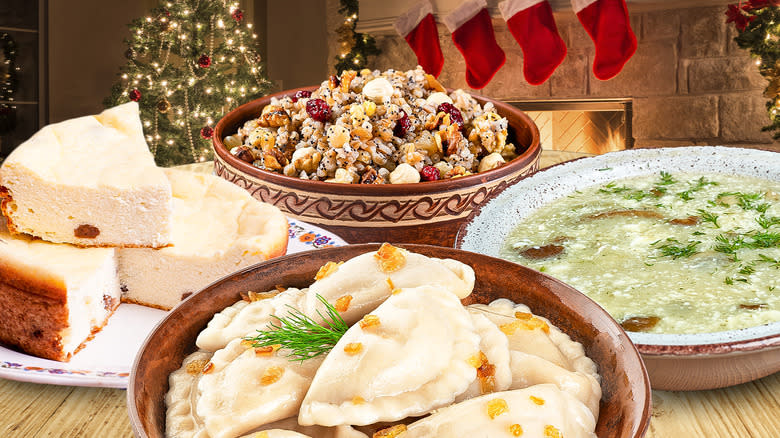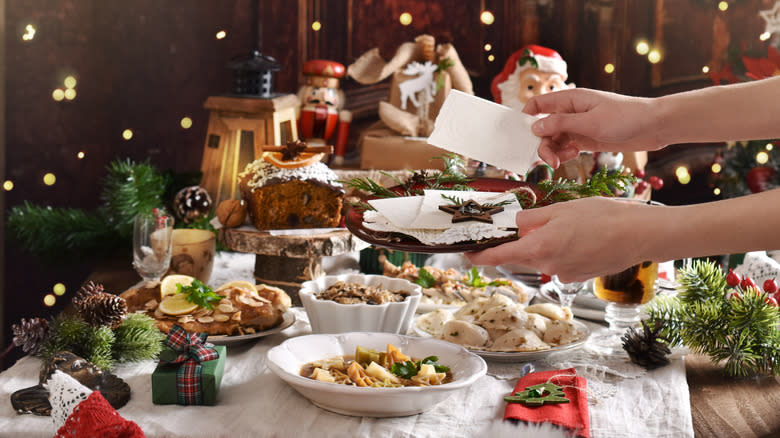Why The Traditional Polish Christmas Eve Dinner Features 12 Dishes

The holidays are a time for families and friends to come together and celebrate the good things in life. Christmas is celebrated all over the world, but Christmas Eve is nearly as important in some traditions. In Poland, they celebrate the day with Wigilia (pronounced vi-gil-ya) or Christmas Eve dinner. At Wigilia, exactly 12 different dishes are served and one chair is left empty to welcome any stranger who may ask to join the feast.
There are 12 dishes to represent the 12 disciples of Jesus Christ, the 12 months in a year, and also because the number is considered financially lucky in Polish culture. Calling it a feast may be misleading, though, because this isn't a typical dinner where everyone eats until they're full. Wigilia is a time of symbolic restraint and sacrifice, and people tend to eat a little of each dish and then stop. Notably, the twelve dishes are all meat-free except for fish. For a long time, Christians were supposed to refrain from eating meat until the midnight mass. It's no longer required by religious authorities to not eat meat on Christmas Eve, but the tradition has continued nonetheless.
Read more: The Best Meat For Your Charcuterie Board Isn't One You'd Expect
What Are The Traditional 12 Dishes?

You'll find some variation depending on what region of Poland you are in, but there is a general guideline for what the 12 dishes are supposed to be. The night often starts with a beet borscht known as barszcz czerwony followed by a Polish favorite of soup often made from dried forest mushrooms. Then there are the fish dishes like Christmas Eve Carp which is either fried or baked along with a plate of Herring. Of course, you can't forget the famously delicious pouches stuffed with potato puree known as pierogies. Then there's the plate of hot, braised sauerkraut alongside a handful of golabki, which are stuffed cabbage rolls.
And don't forget about dessert. There's the very traditional kutia, which is grains and candied fruit soaked in port or red wine. Old Polish piernik is a delicious but time-consuming to make gingerbread, and then there's Polish cheesecake as well. It's worth noting that this would be a very traditional Wigilia. Many Poles will stick to this tradition, but many are changing things up and with each passing year more people are opting out of one or a few of the traditional 12 dishes. It's, of course, an involved process preparing each dish, and some require work days in advance, so this occasional concession is totally understandable.
Read the original article on Tasting Table.

